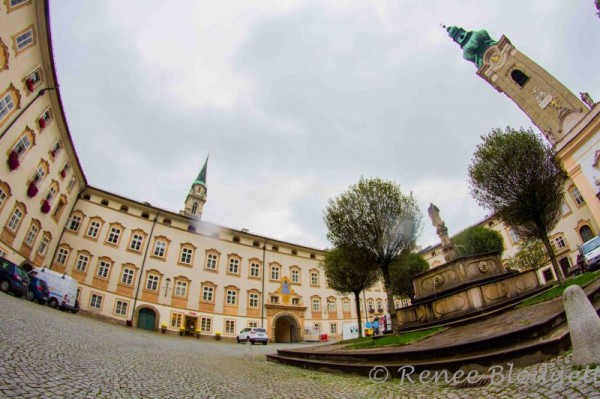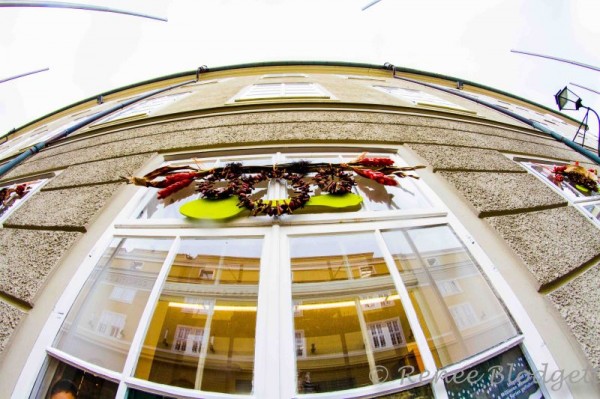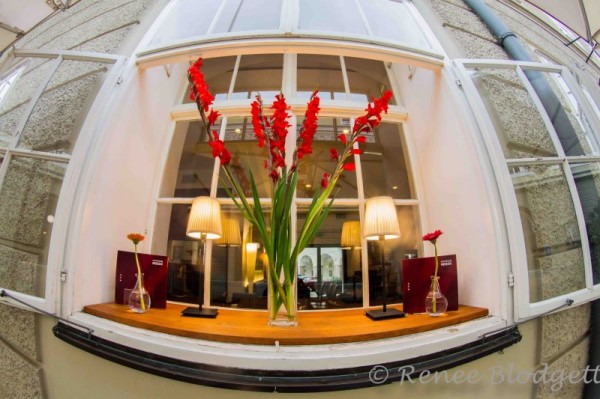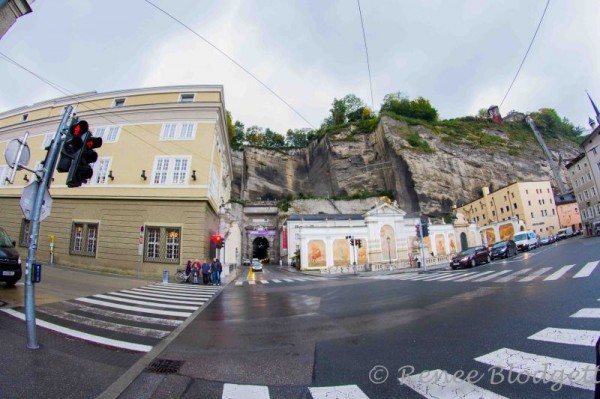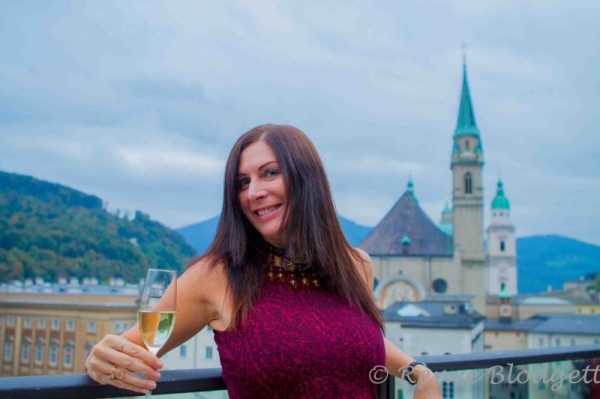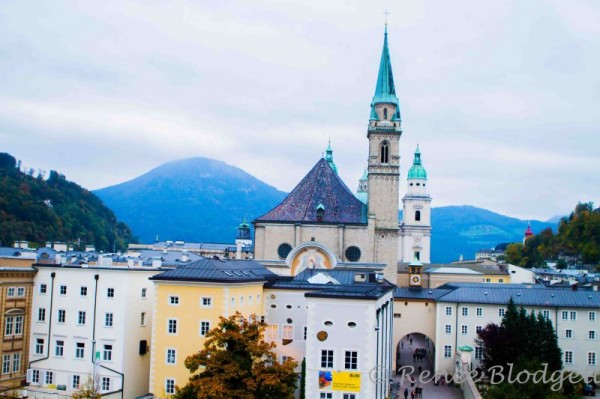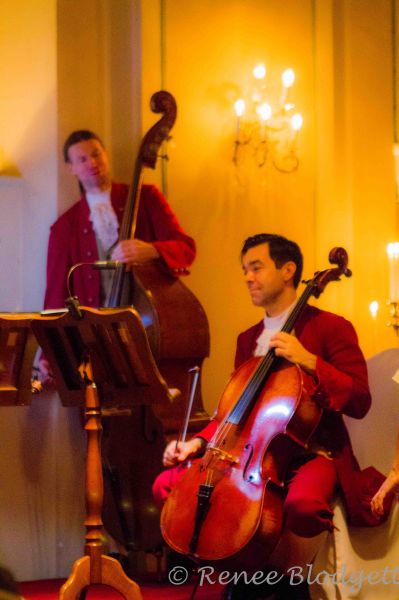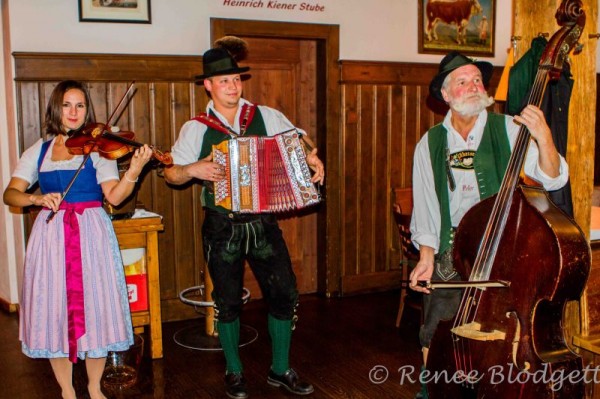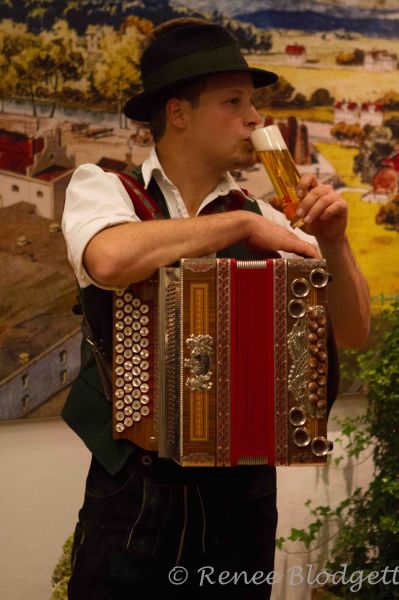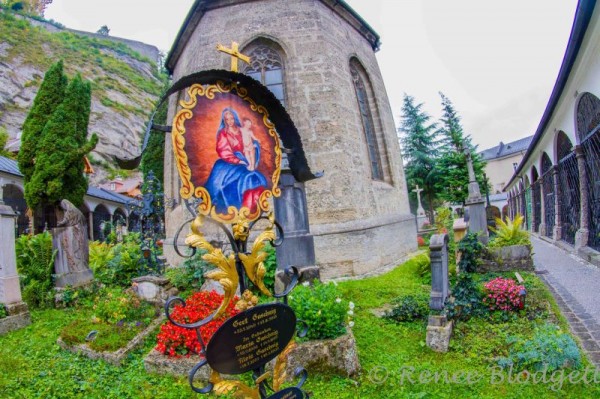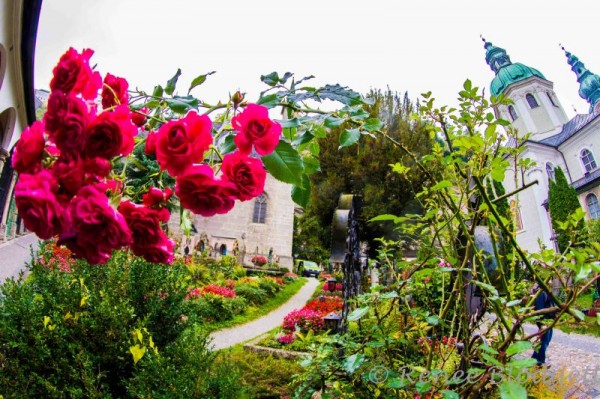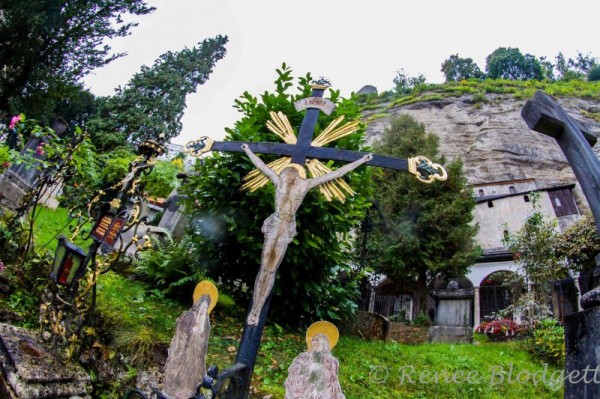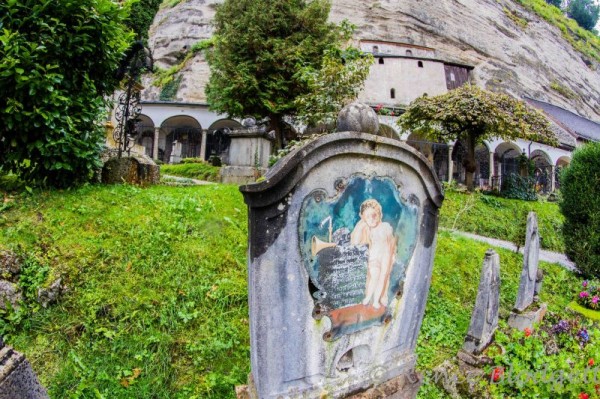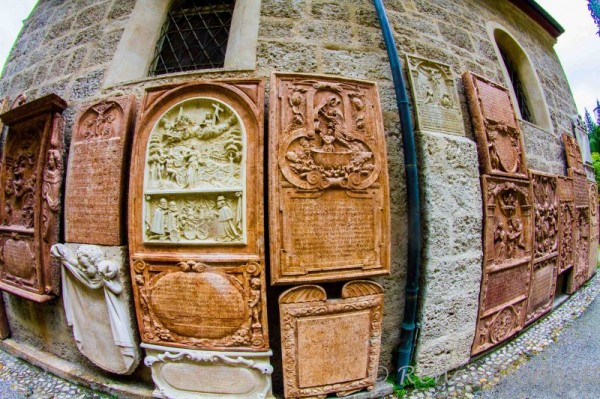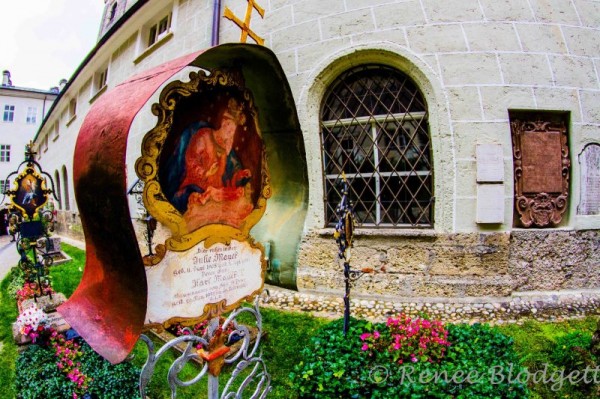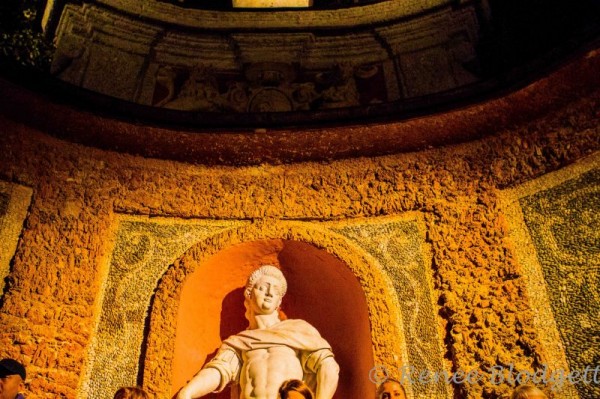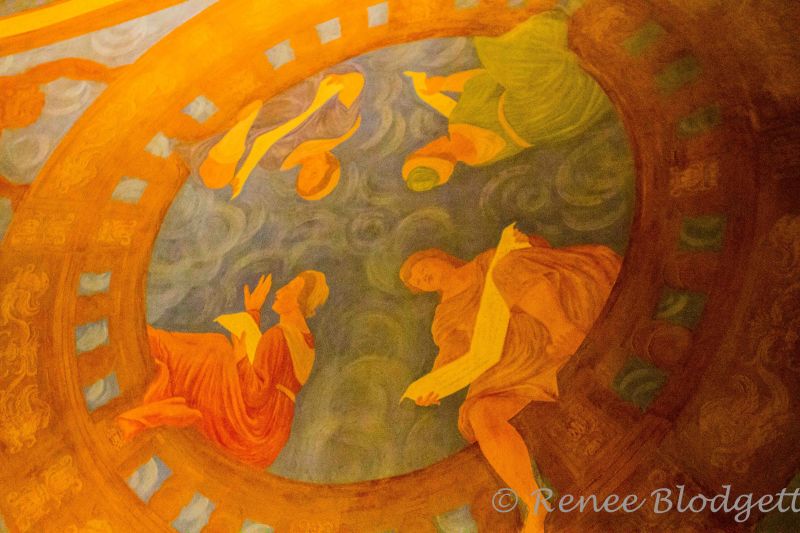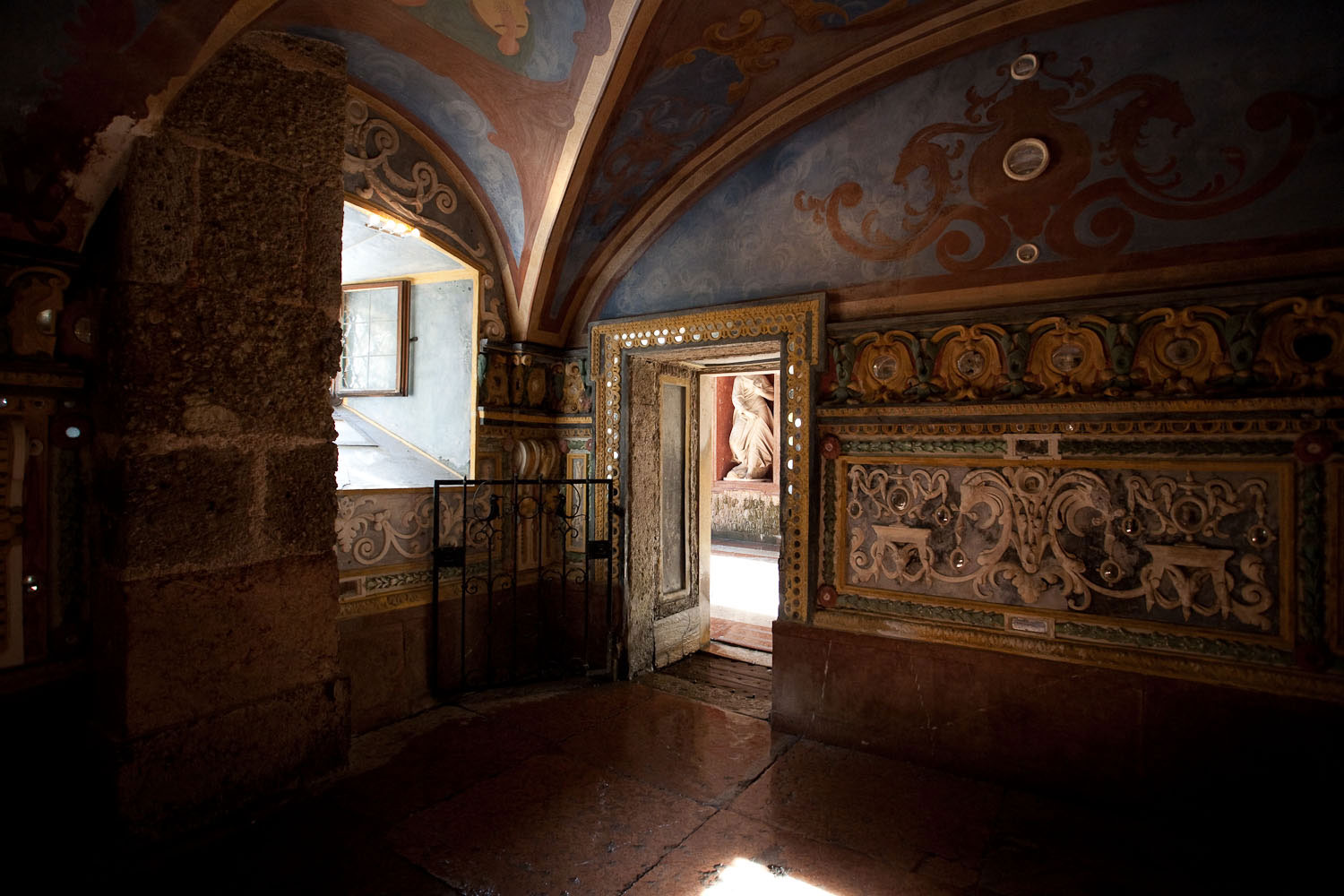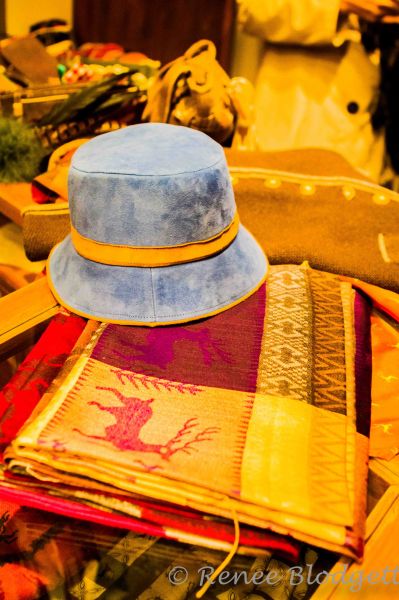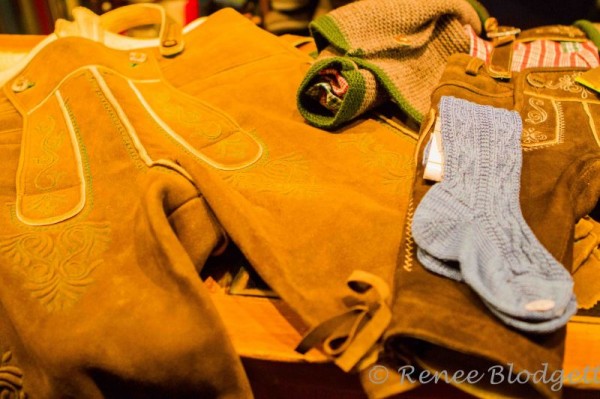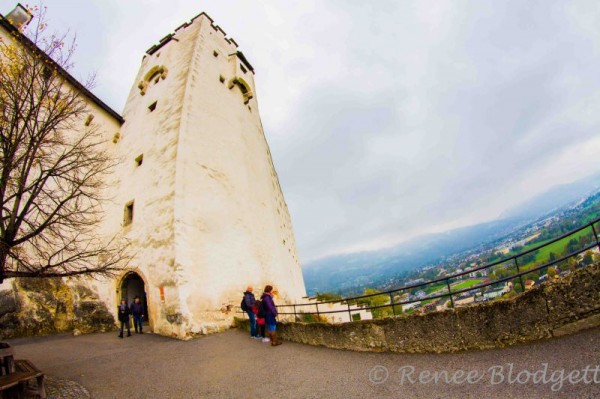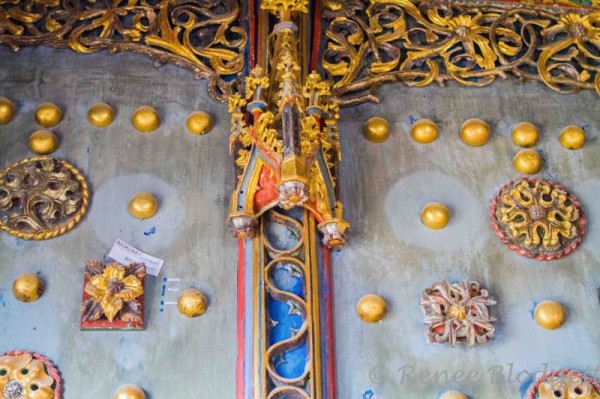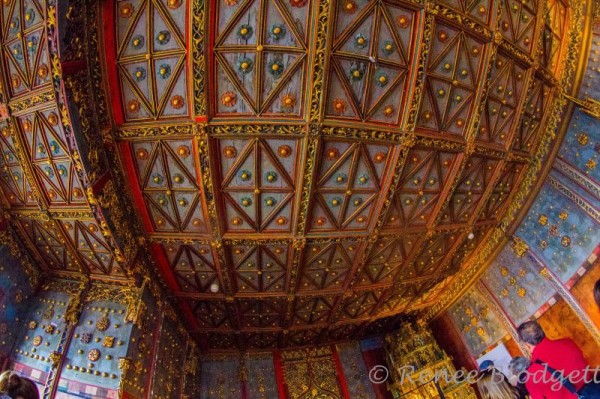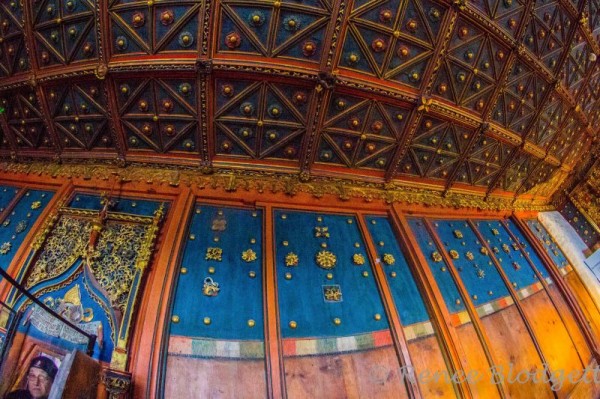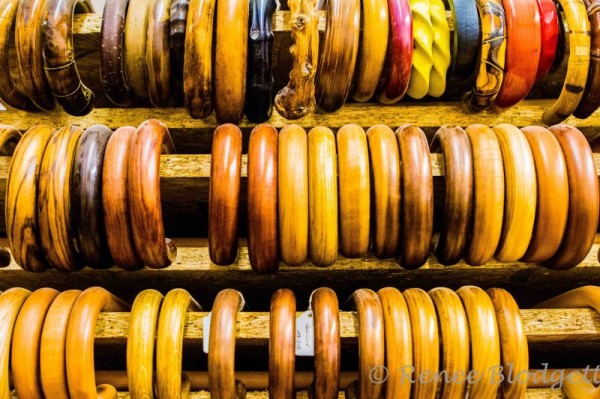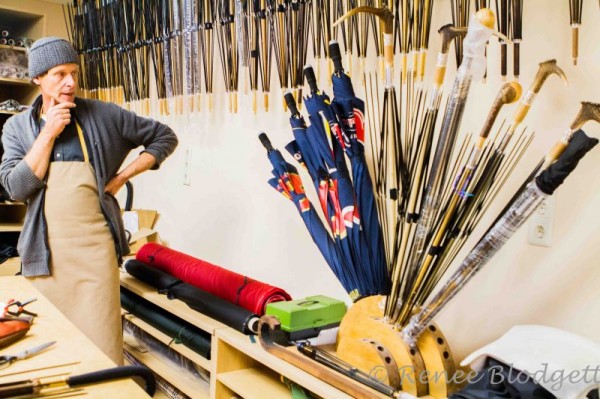When you talk about your travels to Europe and Austria comes up, Americans will likely bring up Vienna first, particularly if they happen to be classical music lovers. If they love musicals, they’ll inevitably know that Salzburg was the city where a significant part of The Sound of Music was filmed and because of that factoid, the city remains a frequently visited destination by Sound of Music lovers around the world.
While I started by Austrian adventure in October in Vienna, I headed to Salzburg afterwards by train, which was only around 2 or so hours. The train ride is incredibly comfortable in both coach and business class, but travel business class if you can — they have power outlets, pots of tea, food service and wifi. Certainly Vienna has no shortage of beauty and history, but Salzburg, given its smaller size and nearby hills and mountainous landscapes of the nearby Alps, is a charming place to visit, and exudes stunning views even when there’s cloudy skies. Below is the view from historical Hohensalzburg Castle in the city’s old quarter.
Salzburg Old Town | the Dom Quartier
asfdfd
Going Back in Time to The Sound of Music (1965)
I was in Salzburg to celebrate the festivities around The Sound of Music 50th Anniversary. Be sure to read my write-ups on the events and Sound of Music Sites: Salzburg Celebrates The Sound of Music 50 Years Later and Salzburg’s Sound of Music For Romantics & Nature Lovers.
Below I am at the venue where they held a champagne reception at the Kulisse Salzburg (Festive Halls), prior to the evening performance of the Sound of Music, which included four of the former original actors from the movie, which came out 50 years ago. The balcony at the venue overlooked historical Salzburg which was a beautiful sight to see as the sun was beginning to set. There are tons of photos and background in my above articles that focus on the sites, the history and my experience of the anniversary that Salzburg was fully celebrating during my visit.
Below, a piano player goes to town with Sound of Music classics over a cocktail reception after the official 50th Anniversary Press Conference.
Traditional Music
The below musicians played classical music throughout three mini-operas as part of the Mozart Dinner offering, which they have in an old abbey every night of the week. Stifskeller St. Peter has a three course candlelight dinner in a decadent and old historical setting – definitely worth doing.
There’s also more traditional Austrian music which you can find throughout Salzburgerland — in the city of Salzburg and surrounding region. We had our fair share of it and it was all wonderful — below is a band who played for us at the traditional Austrian pub Stiegl’s Brauwelt, which serves classic traditional fare and homemade brewed beer.
Below are a couple of videos of traditional music I heard while in Salzburg. Enjoy! (LOVED IT!!)
And then of course, before we set off on the traditional Sound of Music tour, we heard more….
Old Cemeteries…
In and around the Dom Quartier, we walked through an old cemetery, which took us back in time. And, it’s not the only one in the area. Given how new our cemeteries are in the states, it’s hard for us to fathom that these tombstones have been here long a few centuries. The Petersfriedhof, or St. Peter’s Cemetery, is the oldest Christian graveyard inSalzburg, dating back to 1627. Take a visual stroll with me through so you can get a flavor of Salzburg’s rich historical past and architecture.
Hellbrunn Palace & Trick Fountains
Historical Hellbrunn Palace and Trick Fountains has fountains and water jets that can be enjoyed almost exactly the way they were intended 400 years ago – as entertainment for the archbishops – and still include secret and mystical grottos, water-powered figures and hidden jets of water around every corner. Outside, you can meander through the palace and take in the majestic nature of the Palace itself with its numerous fountains, all of which have “tricks” connected to them. See my write-up on our night time experience there in mid-October.

Traditional Austrian Shopping
If you don’t know what Lederhosen is, then you’ve likely not been to Germany, Switzerland or Austria, since it is prevalent throughout all three countries. Formerly, lederhosen were worn for hard physical work; they were more durable than a fabric garment and easier to clean. Today, they are mostly worn as leisurewear and lederhosen and dirndl attire is common at Oktoberfest events around the world.
Lederhosen were once widespread among men of the Alpine and surrounding regions, including Bavaria,Austria, the Allgäu, Switzerland, and the autonomous Italian region of Trentino-Alto Adige/Südtirol (formerly part of Austria until after World War I). Essentially they are breeches made of leather that may be worn either short or knee-length. The longer ones are generally calledBundhosen or Kniebundhosen. Below, we visited a traditional shop in central Salzburg, where you can order homemade lederhosen, as well as woolen hats, booties, socks, sweaters, scarves and more.
Hohensalzburg Castle
Located on Mönchsberg 34, the Hohensalzburg Castle or Fortress (“High Salzburg Fortress”) sits atop the small hill of Festungsberg in Salzburg. Erected at the behest of the Prince-Archbishops of Salzburg with a length of 820 feet and a width of 490 feet, it is one of the largest medieval castles in Europe. This huge 11th-century fortress complex boasts stunning views over Salzburg to the Alps and nearby museums.
The castle was refurbished from the late 19th century onwards and became a major tourist attraction with the Festungsbahn cable car, which opened in 1892, leading up from the town to the Hasengrabenbastei. During the early 20th century, it was used as a prison, holding Italian prisoners of war during World War I and Nazi activists (before the Anschluss with Germany) in the 1930’s.
Hohensalzburg Castle was recently selected as main motif for the Austrian Nonnberg Abbey commemorative coin minted on April 5, 2006. This was the first coin of the series “Great Abbeys of Austria” and it shows the Benedictine convent of Nonnberg Abbey. The fortress consists of various wings and courtyard and we spent a couple of hours going through each of them, which can be a bit overwhelming to take in given the vastness of the fortress.
Golden Hall is part of the magnificent state apartments installed on the third floor. The rooms in which the archbishops would normally have lived were one floor below. The state apartments were primarily used for representative purposes and for festivities. The Golden Hall was richly decorated and indicates that the fortress served the archbishops not only as a refuge in times of crisis, but frequently also as a residence up to the 16th century.
In order to gain more space, Archbishop Leonhard von Keutschach had four massive marble pillars constructed on the right-hand outer wall and had a loggia added on. The coat of arms of Leonhard von Keutschach together with those of the Holy Roman Empire, the most powerful German towns and the bishoprics that were connected to Salzburg, are painted on it.
The Golden Chamber is the most magnificently furnished room of the princely chambers. The two long walls are taken up by benches that are richly decorated with vines, grapes, foliage and animals. These benches used to be covered with cloth or leather, but the upholstery has not survived into the modern age. The walls also used to be covered in gold-embossed leather tapestry which adorned the lower part of the wall. Talk about decadence…
The Bedchamber of Prince Bishop is the most intimate room of the princely chambers. The original furniture and precious textiles, such as tapestry, were in the course of time replaced by more “modern” ones. The elaborate wainscoting to keep out the cold still bears witness to the splendor of the past. The upper part of the panels is decorated with gilded buttons and rosettes, whereas the lower part, which is bare today, was probably covered with leather or velvet tapestry. The door conceals a toilet, which is basically a hole in the floor with a wooden frame. In the past, this was a highly modern sanitary facility and was accessible from each floor. Just look at the attention to detail and the vibrant colors that adorn the ceilings and walls.
Umbrella Making
There aren’t any signs for this umbrella making shop in the heart of old Salzburg and we wouldn’t have known about it had it not been for our private guide. In a small alleyway in the shopping area, you wind up at the shop of Andreas Kirchtag, a Schirmerzeuger, or umbrella maker on the second floor of an old building.
We learn that Kirchtag’s family has been hand-making umbrellas for 100 years and after we explore the process and the high quality materials they use, I realize I never want to own a cheap umbrella bought from some market again.
They make the wooden handles by hand and there’s a wide variety of woods to choose from if you commission an umbrella from them. They make and repair umbrellas so if you need one to be transformed, this is your place.
You can even choose your own material, which can be a high-end imported one from Italy or Asia. Your choice affects the price of course, but this is the kind of purchase you don’t make every day, so why not splurge, especially if you want it to last.
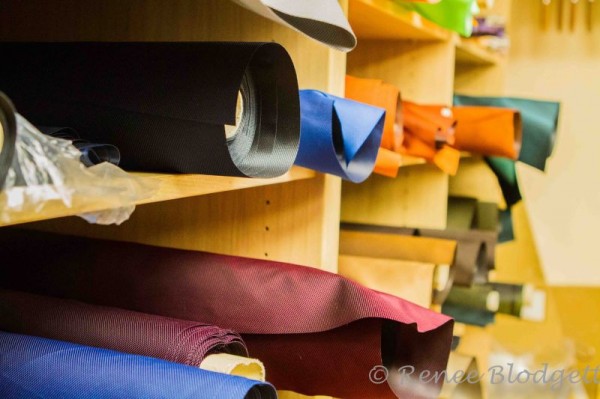
We were somewhat overwhelmed by the choices there were……be sure to read my write-up on Umbrella Making in Salzburg, a Lost Art, which also includes a video I shot while we toured this quirky shop.

Renee Blodgett is the founder of We Blog the World. The site combines the magic of an online culture and travel magazine with a global blog network and has contributors from every continent in the world. Having lived in 10 countries and explored nearly 80, she is an avid traveler, and a lover, observer and participant in cultural diversity.
She is also the CEO and founder of Magic Sauce Media, a new media services consultancy focused on viral marketing, social media, branding, events and PR. For over 20 years, she has helped companies from 12 countries get traction in the market. Known for her global and organic approach to product and corporate launches, Renee practices what she pitches and as an active user of social media, she helps clients navigate digital waters from around the world. Renee has been blogging for over 16 years and regularly writes on her personal blog Down the Avenue, Huffington Post, BlogHer, We Blog the World and other sites. She was ranked #12 Social Media Influencer by Forbes Magazine and is listed as a new media influencer and game changer on various sites and books on the new media revolution. In 2013, she was listed as the 6th most influential woman in social media by Forbes Magazine on a Top 20 List.
Her passion for art, storytelling and photography led to the launch of Magic Sauce Photography, which is a visual extension of her writing, the result of which has led to producing six photo books: Galapagos Islands, London, South Africa, Rome, Urbanization and Ecuador.
Renee is also the co-founder of Traveling Geeks, an initiative that brings entrepreneurs, thought leaders, bloggers, creators, curators and influencers to other countries to share and learn from peers, governments, corporations, and the general public in order to educate, share, evaluate, and promote innovative technologies.


